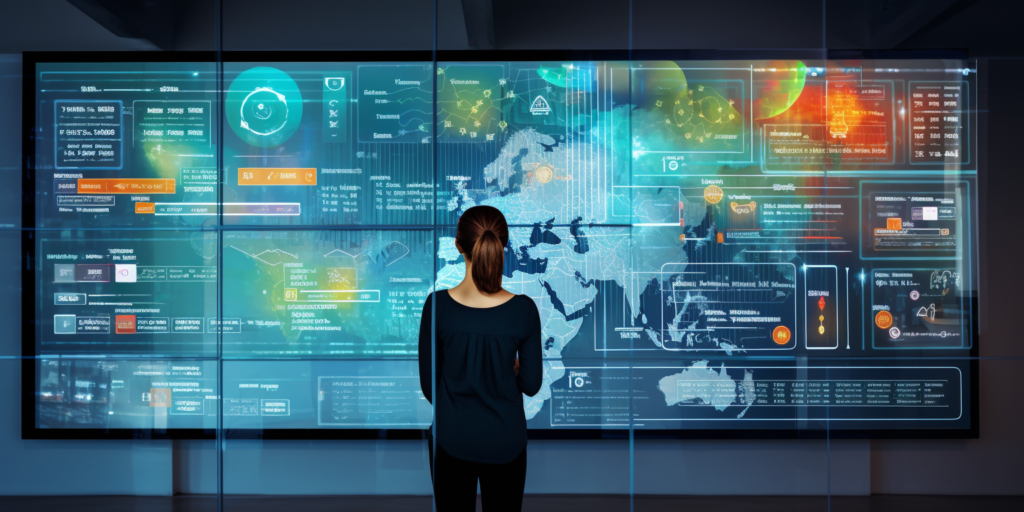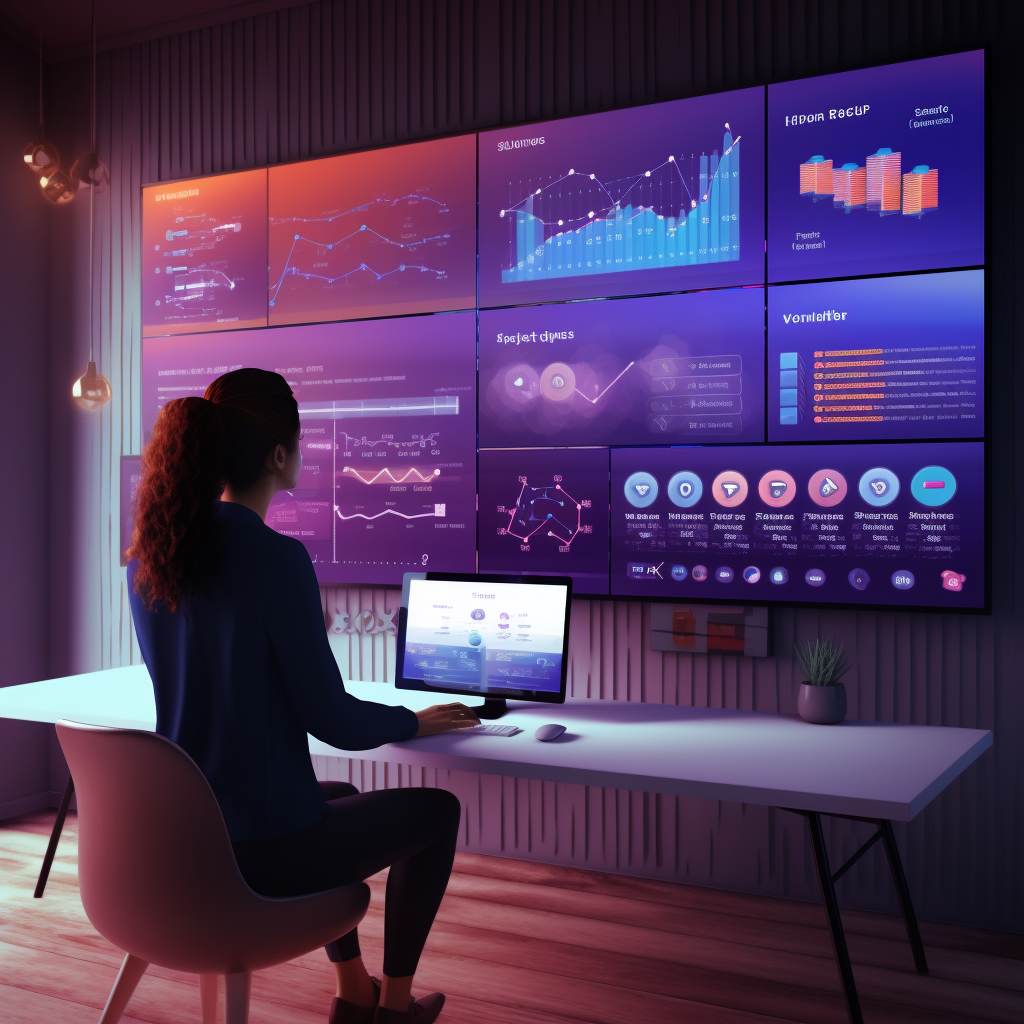9 mins reading

Monitoring and observability are two related concepts in software engineering that help teams understand the health, performance, and behavior of their systems. They use data collection, analysis, and visualization techniques to enable proactive detection and troubleshooting of issues.
What is Monitoring?
Monitoring is the process of collecting, analyzing, and using information to track a system’s progress toward reaching its objectives and to guide management decisions. Monitoring focuses on watching specific metrics and logs that indicate the system’s status and performance. Monitoring tells you when something is wrong, but not necessarily why or how to fix it.
What is Observability?
Observability is the ability to understand a system’s internal state by analyzing the data it generates, such as logs, metrics, and traces. Observability helps teams analyze what’s happening in context across complex and distributed environments so they can detect and resolve the underlying causes of issues. Observability tells you what’s happening, why it’s happening, and how to fix it.
Monitoring vs. Observability : Analogy
To illustrate the difference between monitoring and observability, let’s use an analogy. Imagine you are driving a car. Monitoring is like looking at the dashboard, where you can see the speedometer, the fuel gauge, the engine temperature, and other indicators. These metrics tell you if the car is functioning properly or if there is a problem.

Observability is like having a mechanic who can inspect the car’s internal components, such as the engine, the brakes, the transmission, and so on. The mechanic can tell you what’s causing the problem and how to fix it.

Monitoring and observability are both important for ensuring system reliability, performance optimization, and efficient resource utilization. However, monitoring alone is not enough for modern cloud environments, where systems are dynamic, heterogeneous, and unpredictable. Observability provides a deeper and richer understanding of the system’s behavior and state, enabling teams to identify and solve problems faster and more effectively.
Reasons For Implementing Observability
Observability is a term that describes the ability to understand the internal state of a system by analyzing the data it produces, such as logs, metrics, and traces (they are also known as three pillars of observability). Observability is important for modern software systems, especially those that are distributed, dynamic, and complex, because it helps teams to:
- Detects and diagnoses issues faster and more accurately, by providing rich and contextual information about the system’s behavior and performance.
- Optimize and improve the system’s reliability, efficiency, and user experience, by identifying and eliminating bottlenecks, errors, and inefficiencies.
- Innovate and experiment with new features and functionalities, by enabling faster feedback loops and data-driven decisions.
Is Observability Same As Monitoring?
Observability is not the same as monitoring, although they are related. Monitoring is the process of collecting and using predefined metrics and logs to track the system’s status and performance. Monitoring tells you when something is wrong, but not necessarily why or how to fix it. Observability goes deeper and provides more nuanced and contextual data that helps you understand what’s happening, why it’s happening, and how to fix it.
To implement observability, you need to instrument your system with tools and techniques that can collect, analyze, and visualize the data it generates. Some of the common tools and techniques are:
- Logging: Logging is the process of recording events and messages that occur in the system, such as errors, warnings, or information. Logs can provide valuable insights into the system’s state and activity, as well as the context and causality of events
- Metrics: Metrics are numerical values that measure and quantify aspects of the system, such as performance, resource utilization, or quality. Metrics can help you track trends, patterns, and anomalies in the system, as well as set thresholds and alerts for potential issues.
- Tracing: Tracing is the process of capturing and correlating the data flow and execution path of requests or transactions across multiple components or services in the system. Traces can help you understand the latency, dependencies, and bottlenecks of the system, as well as the root cause and impact of issues.
Observability is not a one-time project, but a continuous practice that requires collaboration, experimentation, and learning. By implementing observability, you can gain more visibility, control, and confidence over your system, and deliver better value and quality to your users and stakeholders.
Observability In Action : example from a business
To illustrate observability with an example from a business, let’s consider a company that provides an online travel booking service. The company has a complex system that consists of multiple microservices, such as search, booking, payment, and recommendation, that run on a cloud platform. The company wants to ensure that its system is reliable, performant, and secure, and that it can deliver a great customer experience.
To achieve this, the company implements observability by collecting and analyzing data from its system using various tools and techniques. For example, the company uses:

- Logging to record events and messages that occur in the system, such as errors, warnings, or information.
- Metrics to measure and quantify aspects of the system, such as performance, resource utilization, or quality. Metrics can help track trends, patterns, and anomalies in the system, as well as set thresholds and alerts for potential issues.
- Tracing to capture and correlate the data flow and execution path of requests or transactions across multiple components or services in the system. Traces can help understand the latency, dependencies, and bottlenecks of the system, as well as the root cause and impact of issues.
By using observability, the company can monitor and troubleshoot its system effectively and efficiently. For example, the company can:
- Identify and resolve performance issues, such as slow response time, high error rate, or low availability, by analyzing the metrics and traces of the system.
- Optimize and improve the system’s efficiency and scalability, by identifying and eliminating resource wastage, over-provisioning, or under-utilization, by analyzing the metrics and logs of the system.
- Enhance and innovate the system’s functionality and customer experience, by identifying and testing new features, such as personalized recommendations, dynamic pricing, or loyalty programs, by analyzing the metrics, logs, and traces of the system.
Observability helps the company achieve its business goals, such as increasing customer satisfaction, retention, and revenue, by ensuring that its system is reliable, performant, and secure, and that it can deliver a great customer experience.
In summary, Observability is the ability to understand the internal state of a system by analyzing the data it produces, such as logs, metrics, and traces. Observability is important for modern software systems, especially those that are distributed, dynamic, and complex, because it helps teams to detect and diagnose issues faster and more accurately, optimize and improve the system’s reliability, efficiency, and user experience, and innovate and experiment with new features and functionalities. Observability is not the same as monitoring, although they are related. Monitoring is the process of collecting and using predefined metrics and logs to track the system’s status and performance. Observability goes deeper and provides more nuanced and contextual data that helps you understand what’s happening, why it’s happening, and how to fix it. To implement observability, you need to instrument your system with tools and techniques that can collect, analyze, and visualize the data it generates, such as logging, metrics, and tracing. Observability is not a one-time project, but a continuous practice that requires collaboration, experimentation, and learning.
If you want to learn more about observability, you can check out these links:
